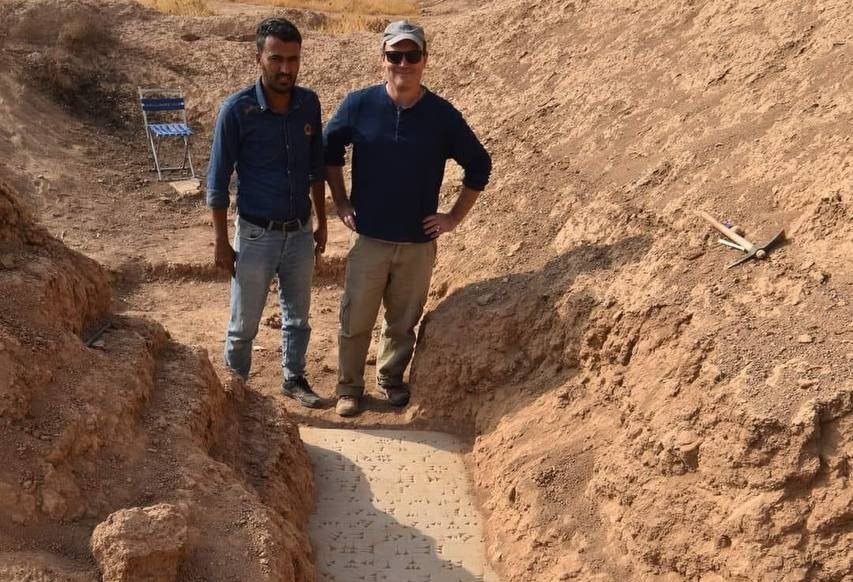US mission discovers the doorstep of the Assyrian king Adad-nirari III with a preserved cuneiform inscription

The University of Pennsylvania museum mission operating in the archaeological city of Nimrud near Mosul discovered the doorstep of the Assyrian king Adad-nirari III, with a well-preserved cuneiform inscription.
These excavations came in the process of expanding the area excavated by Austin Henry Layard in the mid-nineteenth century, which is the palace of the Asyrian king Adad-nirari III (811-783 BC).
The ancient city of Nimrud, located near Mosul, is the jewel of the Assyrian civilization, as it is a treasure of the most important archaeological discoveries of the twentieth century, and the most famous antiquities in a country known as the cradle of civilizations.
Location
The historic city is located on the banks of the Tigris River, 30 km south of Mosul, the largest city in northern Iraq.
The general layout of the city of Nimrud was designed in the form of a square surrounded by an eight-kilometer wall, fortified with defensive towers. In the southern corner of the wall, there is a hill of Nimrud.
History
The founding of Nimrud dates back to the thirteenth century B.C. Haider Hamdani, an Iraqi archaeologist at Stony Brook University, said, "Nimrud was the capital of Assyria in the Neo-Assyrian era."
The city was founded by King Shalmaneser I, but it remained submerged until King Ashurnasirpal II chose it as his royal residence and military capital for the Assyrian state. He renewed it and expanded its castle and the area outside the walls, and then kings after him completed building the city. Throughout its history, it was visited by different peoples and witnessed many religions and cultures.
The city began to be mentioned by archaeologists in 1820, and then foreign scientists explored and excavated it in the subsequent decades.
Abbas Najim





